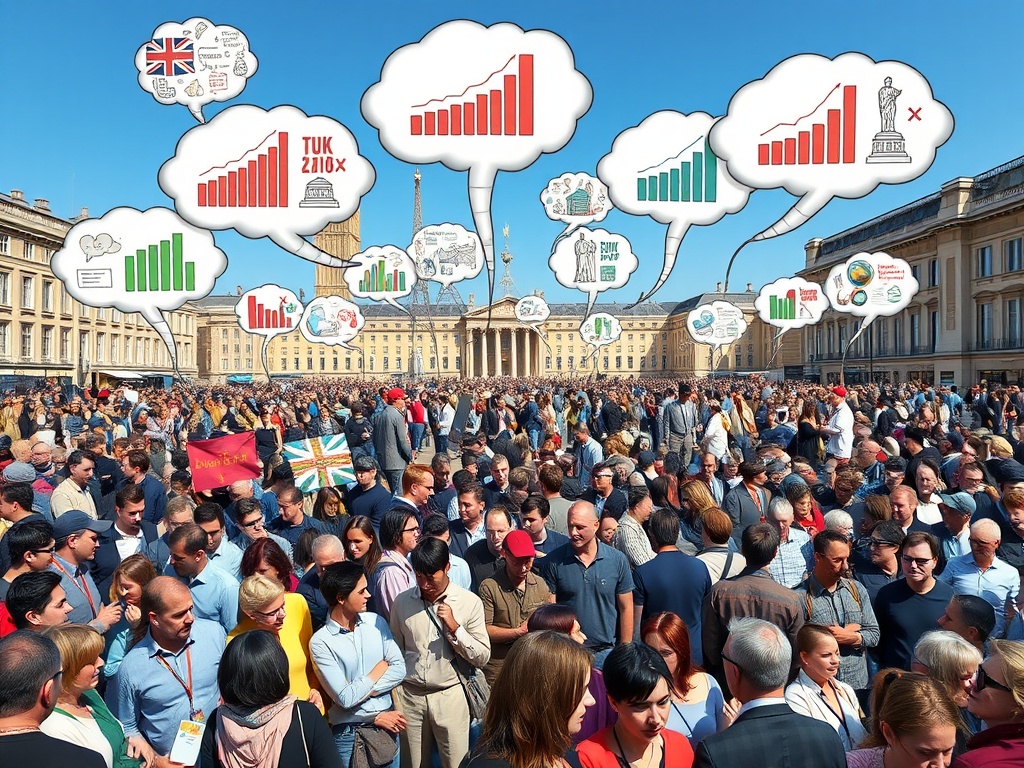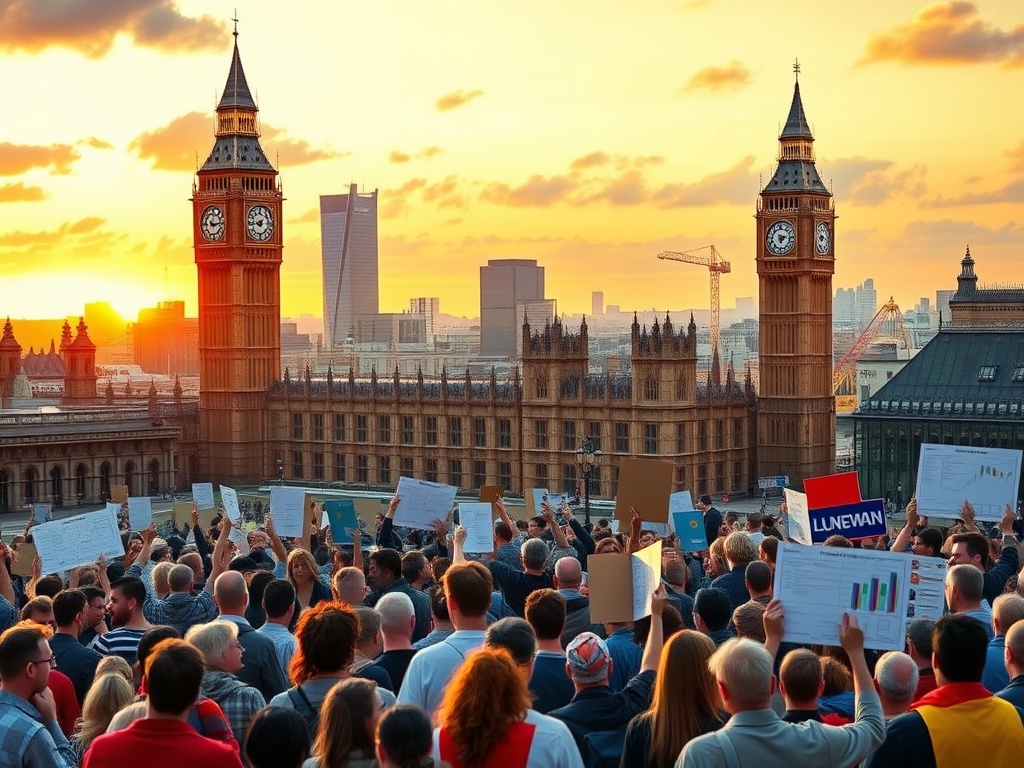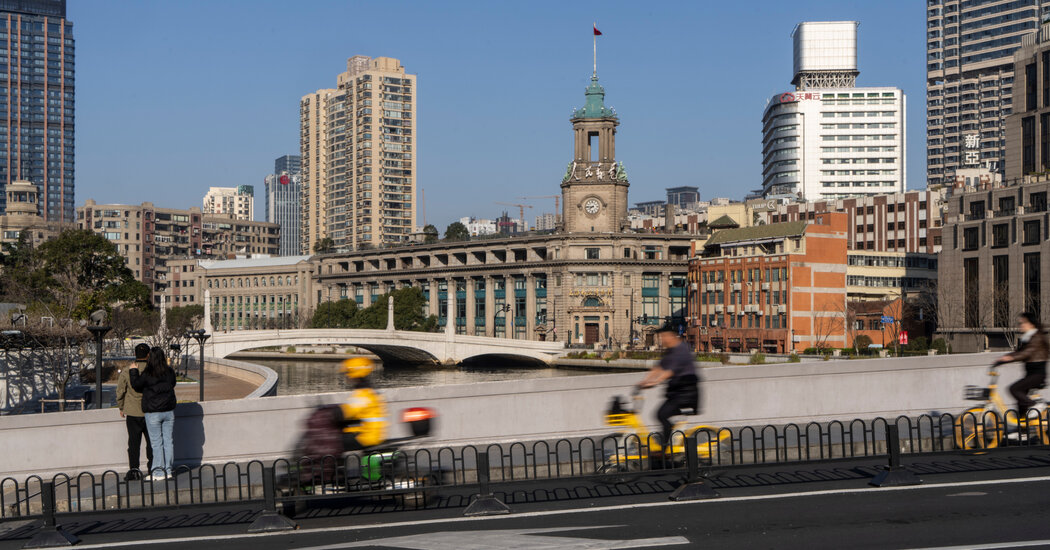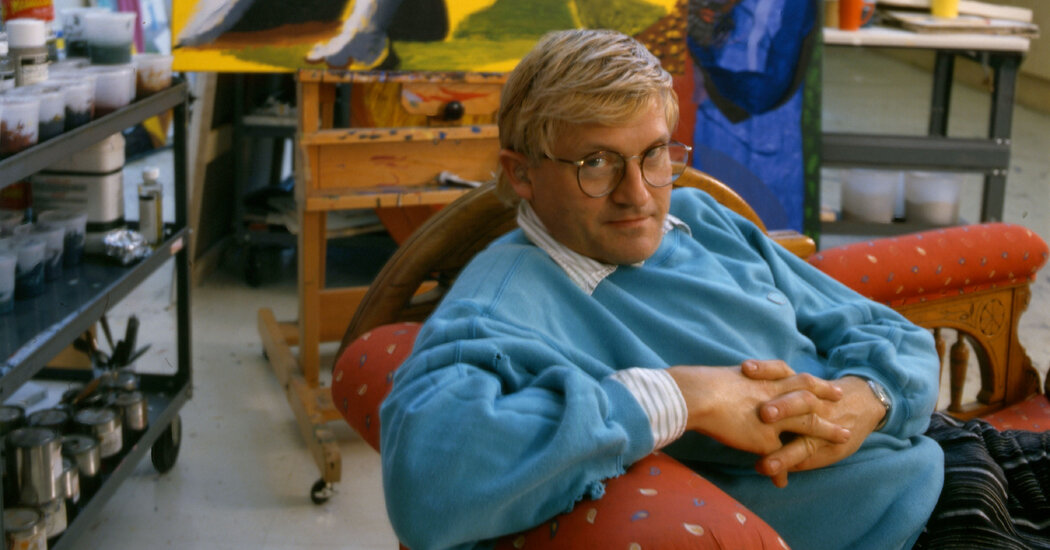Will Kemi Badenoch remain the leader of the Conservative Party by the end of 2025? Will Rachel Reeves find herself in Number 11? Will a resolution over the Chagos Islands ever be reached, and what are the prospects for a ceasefire between Russia and Ukraine? Predicting the twists and turns of politics and current affairs can be exceptionally challenging. The rapid shifts in global geopolitics, particularly highlighted by the recent uncompromising statements from the new US administration regarding Europe, serve as a stark reminder of this unpredictability.
This unpredictability in politics is not solely a product of the current landscape; it has historical precedents as well. For instance, in the autumn of 2021, Boris Johnson was described by a prominent journalist as squatting over British politics like a “giant toad,” with numerous articles speculating about his potential for “another decade in power.” Yet, in less than a year, he was ousted from his position.
But what if there was a method to enhance our abilities to foresee political outcomes? What if this method relied on the insights, intuitions, and even educated guesses of everyday individuals? Iain Mansfield, a former government special adviser, has been running an online forecasting competition for the past three years. This contest challenges participants to make predictions about UK politics, the economy, global events, science, the arts, and various other subjects.
In 2024, nearly 400 participants engaged in the competition, with around 100 of them working in the realms of public policy, politics, or journalism (including a few journalists from The i Paper—your author included). Given the diverse backgrounds of the participants, Mansfield believes that the collective insights should hold considerable predictive power regarding how events might unfold by 2025.
The Wisdom of Crowds
The foundation of this claim lies in the concept of the “Wisdom of Crowds”—a phenomenon where the collective judgment of a group tends to be more accurate than that of a single expert. A famous example can be traced back to 1907 when statistician Frances Galton recorded predictions regarding the weight of an ox at a country fair. The average of the 787 guesses proved to be remarkably precise (1,207 lbs compared to the actual weight of 1,198 lbs), surpassing even the estimates from cattle experts. This phenomenon occurs because when a large group of individuals, each with unique perspectives, provides independent estimates, the aggregation of those estimates often cancels out individual biases and errors.
Mansfield’s competition invites participants to predict the probability of 45 distinct events occurring by 2025, with contestants expressing their likelihood assessments as percentages between 0 and 100. For instance, what is the probability that Sir Keir Starmer will still be Prime Minister by the end of the year? What are the chances of Reeves becoming Chancellor and Badenoch retaining her position as Tory leader?
No Expertise Necessary

A key aspect of the Wisdom of Crowds is that participants do not need to be experts. “As long as they’re reasonably informed individuals, then just averaging can yield results that are tough for specialists to surpass,” Mansfield explains. In previous prediction contests, the Wisdom of Crowds outperformed 87 percent of individual forecasters participating in the exercise.
So what does the collective mind of the crowd foresee for 2025? According to Mansfield’s findings, the crowd estimates an 88 percent likelihood that Starmer will still occupy the Prime Minister’s office by the end of the year. In contrast, Reeves and Badenoch may have more cause for concern; Reeves has a 65 percent chance of becoming Chancellor, while Badenoch stands at a 78 percent likelihood of remaining Tory leader.
The crowd’s predictions may not be comforting for Conservative supporters. Contestants collectively assessed a 62 percent chance that Reform UK would be polling higher than the Conservatives by year-end, with a 51 percent chance that Nigel Farage’s party would outpace Labour.
On the policy front, the crowd estimates a 67 percent chance that net migration to the UK in the year leading up to June 2025 will exceed 500,000. However, there is only a 26 percent chance that the total number of homes built in the UK during 2024-2025 will surpass 300,000—the target Labour must meet to achieve its commitment of 1.5 million new homes by 2029. Additionally, the crowd holds a skeptical view regarding Starmer’s potential deal to transfer the Chagos Islands to Mauritius, assigning it a mere 46 percent probability.
What Chance Lasting Peace in Ukraine?
On the global stage, the crowd estimates a 51 percent chance that Elon Musk will be dismissed from his role at DOGE and a 16 percent chance that either the Panama Canal or Greenland will be ceded to the United States. The likelihood of a lasting ceasefire or truce between Ukraine and Russia before the year concludes is pegged at 50 percent (based on predictions made prior to the latest revelations from the Trump administration), while the probability of a Chinese blockade of Taiwan stands at 32 percent, and the chance of over 500,000 Palestinians exiting Gaza (either forcibly or voluntarily) is assessed at 36 percent. (This Gaza question was posed strikingly before Trump’s recent comments about “buying and owning” the territory.)
Of course, the Wisdom of Crowds is not infallible. Mansfield notes that it “falls short slightly” in the face of “black swan” events—high-impact occurrences that come as a surprise. “Last year, the one significant area where the Wisdom of Crowds missed the mark was the success of Reform in the general election, so it’s not a guaranteed predictor,” he states.
Moreover, particularly insightful individuals can outperform the crowd. Over the past two years, a health economist has consistently won Mansfield’s competition. “He’s not a political expert, but he diligently follows the news and possesses a strong grasp of statistics and probability.” How did those working in politics fare? The reputation of “experts” has faced scrutiny lately. However, Mansfield observes that “on average, last year, those engaged in politics performed better than those outside the field by a noticeable margin.”
Dominic Cummings and Superforecasting
Mansfield’s competition is primarily a lighthearted endeavor, but he believes there’s a serious point to be made. The political realm’s interest in forecasting tends to fluctuate. It peaked during Dominic Cummings’ tenure in Number 10, when the controversial strategist encouraged special advisers to delve into literature on “superforecasting.” However, this interest waned after his departure.
Mansfield argues that the quality of governance would improve if Westminster and Whitehall adopted a more systematic approach to forecasting (journalists should also be held accountable for their predictions, he adds). He suggests that “it would be extremely beneficial” for more assessments to be conducted regarding the accuracy of forecasts issued by institutions like the Office for Budget Responsibility, allowing for evaluations of whether they consistently err.
For instance, whenever the Government receives legal advice, its lawyers provide a forecast on the likelihood of a legal challenge and its chances of success. The issue is that, according to Mansfield, “no one ever revisits to see if they were correct.” Enhancing the accuracy of forecasts (or employing lawyers with a better understanding of probable outcomes) could save taxpayers significant amounts by avoiding futile litigation, he contends. “Normalizing predictions with probabilities and error bars should be a goal for both the government and the media,” he states.
How to Predict the Political Future
So, if you consider yourself an amateur political pundit, how can you refine your predictive skills? Mansfield offers several tips. First, begin with a “base rate” probability. “When assessing the chance of a leadership change or a natural disaster, look at historical frequencies of occurrence. This serves as a foundation for your adjustments.”
Next, consider all potential outcomes for a given scenario. When Mansfield asked participants to estimate the likelihood of Joe Biden being re-elected last year, many opted for a 50 percent chance. While this seemed reasonable based on polls, deeper analysis could yield more nuanced responses. “If you think about it, one possibility is that Biden could pass away due to his advanced age. What are the odds of an 82-year-old man dying?” Mansfield points out. Additionally, there was a chance he could withdraw from the race, which indeed happened.
Thus, when contemplating whether Biden could win, it’s essential to lower that 50 percent prediction due to these small, significant possibilities. Contestants who consistently make these minor adjustments with their probabilities can gain “material advantages” in the game, he asserts.
Finally, strive to set your emotions aside. “Individuals often bet on what they wish to happen or what they fear will occur,” Mansfield observes. Last year, many contestants assigned “very high probabilities” to the notion that large numbers of immigrants would be deported to Rwanda, likely reflecting their concerns about the issue affecting their probabilities.
“Those who excel are those capable of separating their desires or fears from the data at hand,” he concludes.




